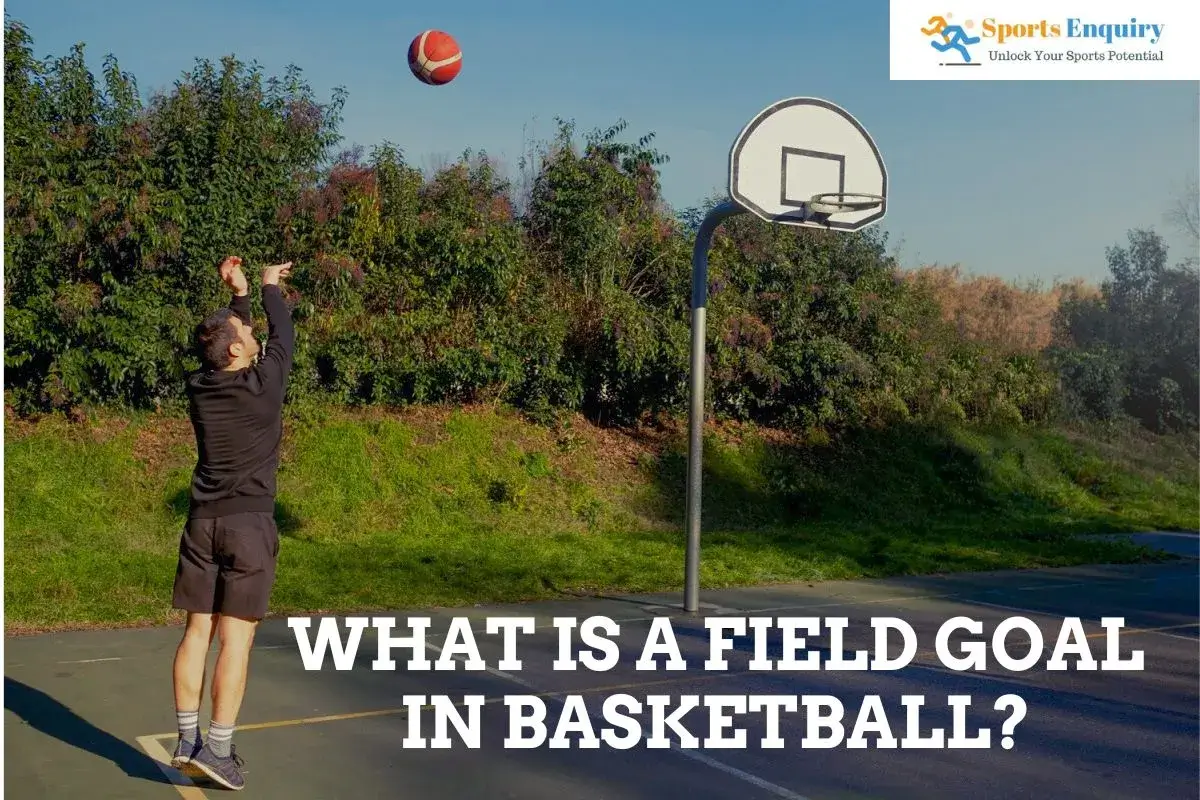What Is A Field Goal In Basketball?

Curious about how basketball players effortlessly score points during a game? It’s all about those magical moments called field goals! Imagine this: a player shoots, and if the ball goes through the hoop, boom, points for the team!
Welcome to our guide on field goals in basketball. In this blog, we’re going to break down everything you need to know about this crucial part of the game. Whether you’re just starting out or a die-hard fan, get ready to learn about the basics, types, and importance of field goals, all explained in simple terms that anyone can understand. So, let’s dribble right in and score big with our knowledge of field goals in basketball!
What is a Field Goal?
In basketball, a field goal refers to any successful shot made from the field, excluding free throws. A field goal can be worth two points if it’s scored from within the three-point line or three points if it’s scored from beyond the three-point line.
Types of Field Goals
In basketball, scoring can come in different flavors, primarily categorized into two types: Two-Point Field Goals and Three-Point Field Goals.
Two-Point Field Goals
Two-point field goals are shots made from inside the three-point line, worth two points. These shots include layups, where players score close to the basket, jump shots taken from a bit farther away, and mid-range shots made from a moderate distance. They’re the most common way to score in basketball and are essential for building a team’s score.
Three-Point Field Goals
Three-point field goals are shots made from beyond the three-point line, earning three points. These shots require skill and accuracy and are usually attempted by players who specialize in long-range shooting. Successfully making a three-pointer can quickly change the game’s momentum in favour of the scoring team. They’re exciting plays that add an extra dimension to basketball and can make a huge difference in the final score.
The Significance of Field Goals
Field goals are the primary method of scoring in basketball, making them integral to the flow and outcome of the game. Teams strategize to create opportunities for high-percentage shots while defending against their opponents’ scoring attempts. Efficient scoring through field goals often correlates with a team’s success on the court.
Types Of Field Goal Statistics
In basketball, field goal statistics are essential for assessing player and team performance. These stats include Field Goals Made (FGM), which counts successful shots, Field Goals Attempted (FGA), tracking all attempted shots, and Field Goal Percentage (FG%), indicating shooting accuracy by dividing successful shots by attempted shots and multiplying by 100. Additionally, Effective Field Goal Percentage (eFG%) adjusts for the added value of three-pointers. These stats offer valuable insights into shooting accuracy, scoring efficiency, and offensive effectiveness, helping coaches, analysts, and players evaluate their performance and plan strategies for improvement on the court.
Field Goals Made (FGM)
In basketball, FGM, or Field Goals Made, simply shows how many times a player or team successfully scores by putting the ball through the hoop. Whether the shot is worth two points or three, each basket counts toward the FGM. It’s like keeping score of how many times someone gets the ball in the basket. This helps us see how well players can score and how good a team is at offense. Coaches, fans, and players pay attention to FGM to understand who’s doing a great job at scoring and how well their strategies are working during the game. It’s an easy way to see who’s making the most baskets and who’s contributing the most to the team’s success on the court.
Field Goals Attempted (FGA)
Field Goals Attempted (FGA) is a basketball stat that counts how many shots a player or team takes during a game or a certain time. It includes both shots that go in and ones that miss. FGA helps us see how often players or teams try to score. If someone has a lot of FGA, they’re taking many shots, showing they’re trying to score often. It’s a way for coaches and fans to understand how active players are on offense and how many chances they’re creating to put points on the board.
Field Goal Percentage (FG%)
Field Goal Percentage (FG%) is a basketball statistic that measures a player’s or team’s shooting efficiency. It calculates the percentage of field goals made out of all attempted shots. The formula for FG% is (Field Goals Made / Field Goals Attempted) * 100. For example, if a player makes 5 out of 10 shots attempted, their FG% would be 50%. FG% provides valuable insight into how accurately a player or team is scoring. A higher FG% indicates better shooting efficiency, while a lower FG% suggests less accuracy. Coaches, analysts, and fans use FG% to evaluate players’ scoring abilities and teams’ offensive effectiveness. It’s an essential statistic for assessing shooting proficiency and determining the overall effectiveness of offensive strategies.
Effective Field Goal Percentage (eFG%)
Effective Field Goal Percentage (eFG%) is a basketball statistic that measures shooting efficiency while considering the added value of three-point shots. Unlike traditional Field Goal Percentage (FG%), which treats all field goals equally, eFG% adjusts the calculation to reflect the fact that three-pointers are worth more than two-point shots. The formula for eFG% is (FGM + 0.5 * 3PM) / FGA, where FGM represents the total number of field goals made, 3PM represents the total number of three-point field goals made, and FGA represents the total number of field goals attempted. By incorporating the extra point value of three-pointers, eFG% provides a more accurate measure of shooting efficiency and helps coaches and players assess scoring effectiveness on the court.

I’m James Ritter, a sports enthusiast. I’ve played sports since school, and now I enjoy writing about them. My goal is to inspire aspiring athletes through stories of success and determination. I believe anyone can achieve greatness with the right guidance. I aim to make a positive impact on the sports community by sharing stories and insights, connecting my love for sports and writing. Join me on this journey of inspiration for all sports lovers.






